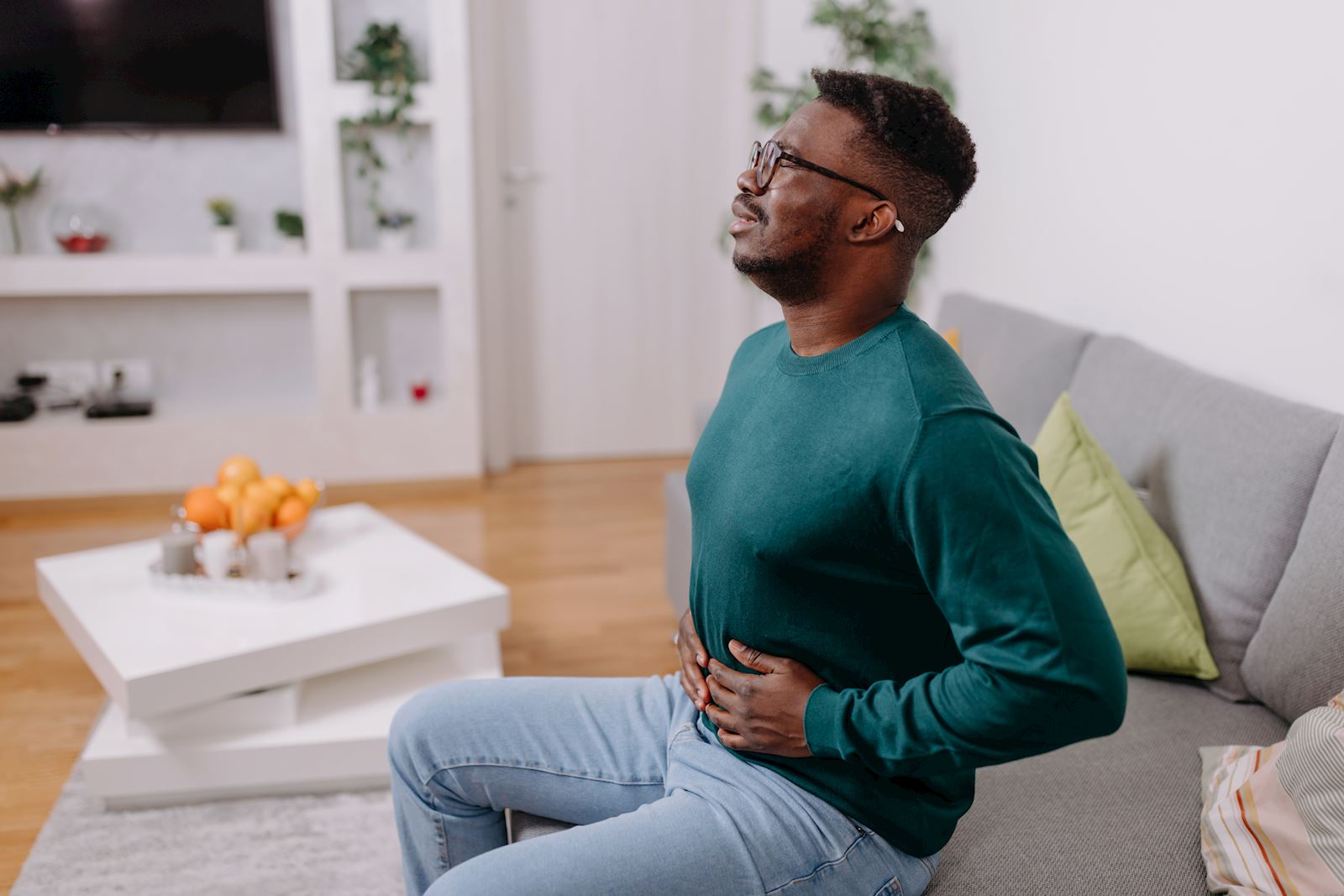“Blood in your stool is never normal. That should always be evaluated.”
That’s the advice of Amber Tierney, MD, who sees plenty of reasons why each day as a gastroenterologist in the Inflammatory Bowel Disease Center.
But it’s advice that’s often ignored. A bloody stool could mean something harmless and temporary like a hemorrhoid — a condition half of Americans over age 50 have. Or it could be as serious as cancer — or a chronic condition that can lead to it, like ulcerative colitis.
What is Ulcerative Colitis?
It’s just as it sounds: ulcers in the colon. Along with Crohn’s disease, ulcerative colitis is one of the two main inflammatory bowel diseases that afflict more than a million Americans.
The lining of your colon is chronically inflamed and tiny ulcers develop. Those open sores seep blood, pus and mucus as your immune system attempts to heal. And that presents a number of unpleasant symptoms.
Ulcerative Colitis Symptoms
“Basically, your body starts attacking the colon. This typically results in frequent bloody stools,” Dr. Tierney says. “You can also have cramping, lower abdominal pain, weight loss, anemia and urgency to get to the bathroom to empty your bowels.”
Unlike other types of colitis, ulcerative colitis is a chronic condition with no clear cause. With acute colitis, the most common cause is infection. The symptoms are temporary and go away in time. Sometimes, antibiotics are needed to rid your intestines of the infectious bacteria.
Ulcerative colitis is long-term, but the symptoms may come and go as they would with acute colitis.
“It’s characterized by periodic flare-ups where symptoms get worse for a period of time and then improve,” Dr. Tierney says. “Ulcerative colitis is also different from other types of colitis in that it’s limited to the colon and rectum, and typically just on the surface of the colon.”
Types of Ulcerative Colitis
While strictly limited to the large intestines, the location of ulcerative colitis within the colon and rectum can present slightly different symptoms. So they’re classified into three types:
- Ulcerative proctitis – It’s only in the rectum, so you’re more likely to experience symptoms there. You may have rectal bleeding and pain or urgency with your bowel movements. This type of ulcerative colitis does not increase your risk of colorectal cancer.
- Distal colitis – Sometimes inflammation is limited to the left side from the rectum and partially or all the way up to where it bends near the spleen. It’s also known as left-sided colitis and can present pain on that side of your abdomen along with loss of appetite, weight loss and bloody diarrhea.
- Extensive colitis – As the name suggests, inflammation is extensive, covering the whole colon. The symptoms are the same as left-sided colitis, except your abdominal pain is not limited to one side.
How do you know if you have acute or chronic colitis?
Since the symptoms of ulcerative colitis can go away, then reappear later, it can be difficult to discern whether it’s really a long-term problem or another infection.
“Most cases of colitis are going to be acute. It’ll be self-limited and from an infection,” Dr. Tierney says. “Whenever you have ongoing symptoms for more than a few weeks, or definitely longer than a month, that raises our suspicions for ulcerative colitis.”
But cases of ulcerative colitis — and inflammatory bowel diseases as a whole — are on the rise.
“That could be from a number of different reasons. Either we’re getting better at diagnosing it or it could be related to environmental exposure or dietary exposures,” adds Dr. Tierney. “We’re seeing that across the U.S. Third-world countries have less inflammatory bowel disease than you see in developed countries.”
The only way to know what’s going on for sure is to get a colonoscopy. They’re not just for screening for colorectal cancer; they’re also used for diagnosing conditions of the digestive tract.
“Ulcerative colitis has a classic appearance on a colonoscopy. What we’re looking for is not just inflammation, but chronic inflammation — signs that it has been going on for a long time,” Dr. Tierney says. “We can see redness, ulcerations — so inflammation with bleeding. Basically, it looks very angry.”
How do you treat ulcerative colitis once you find it?
The good news is that medical advancements have changed the treatment plan for ulcerative colitis. You’re often able to avoid surgery completely by taking medication and making lifestyle changes. But colorectal surgery is always an option if you don’t want to be on medication long-term.
“Diet plays an important role. Sometimes dietary modifications can improve your symptoms. Most patients, however, do require oral medications to keep the inflammation under control,” Dr. Tierney says. “More severe inflammation oftentimes requires infusions and injections — so stronger immuno-suppressive medications.”
Ulcerative Colitis Diet Plan
Adjusting your diet can help you manage your symptoms and prevent flare-ups. But there’s no single “colitis diet” that works for everyone. And you may need to eat differently when you’re in the middle of a flare than when you’re not.
Everyone also experiences different triggers, so what causes your ulcerative colitis to flare up is specific to you. But there are several foods that are common colitis triggers and others that many people find more tolerable, especially during flares.
Potential trigger foods to avoid include:
- Alcohol
- Coffee and other caffeinated drinks
- Dairy foods
- Fruits and veggies with a skin, peel or seeds
- Hot or spicy food
- Raw green vegetables
- Sugary foods, juices and fruits
- Whole grains
- Whole nuts
In general, foods high in fat, fiber and sugar are harder for your colon to digest. And alcohol, caffeine, heat and spice tend to irritate the bowels. But some trigger foods are part of a healthy diet, so it’s critical you get the nutrients they provide elsewhere in your diet or through supplements.
By working with your doctor and a dietitian with experience in inflammatory bowel disease for meal planning, you can identify your triggers and make sure you’re getting enough nutrition to overcome their absence in your diet.
“The important thing is that if you have ulcerative colitis, it’s treated. Because we know that long-term inflammation from ulcerative colitis increases your risk of developing colon cancer,” Dr. Tierney advises. “And if it feels like you may have symptoms consistent with ulcerative colitis, you should talk about that with your primary care provider, who can give you a referral to see a gastroenterologist.”


